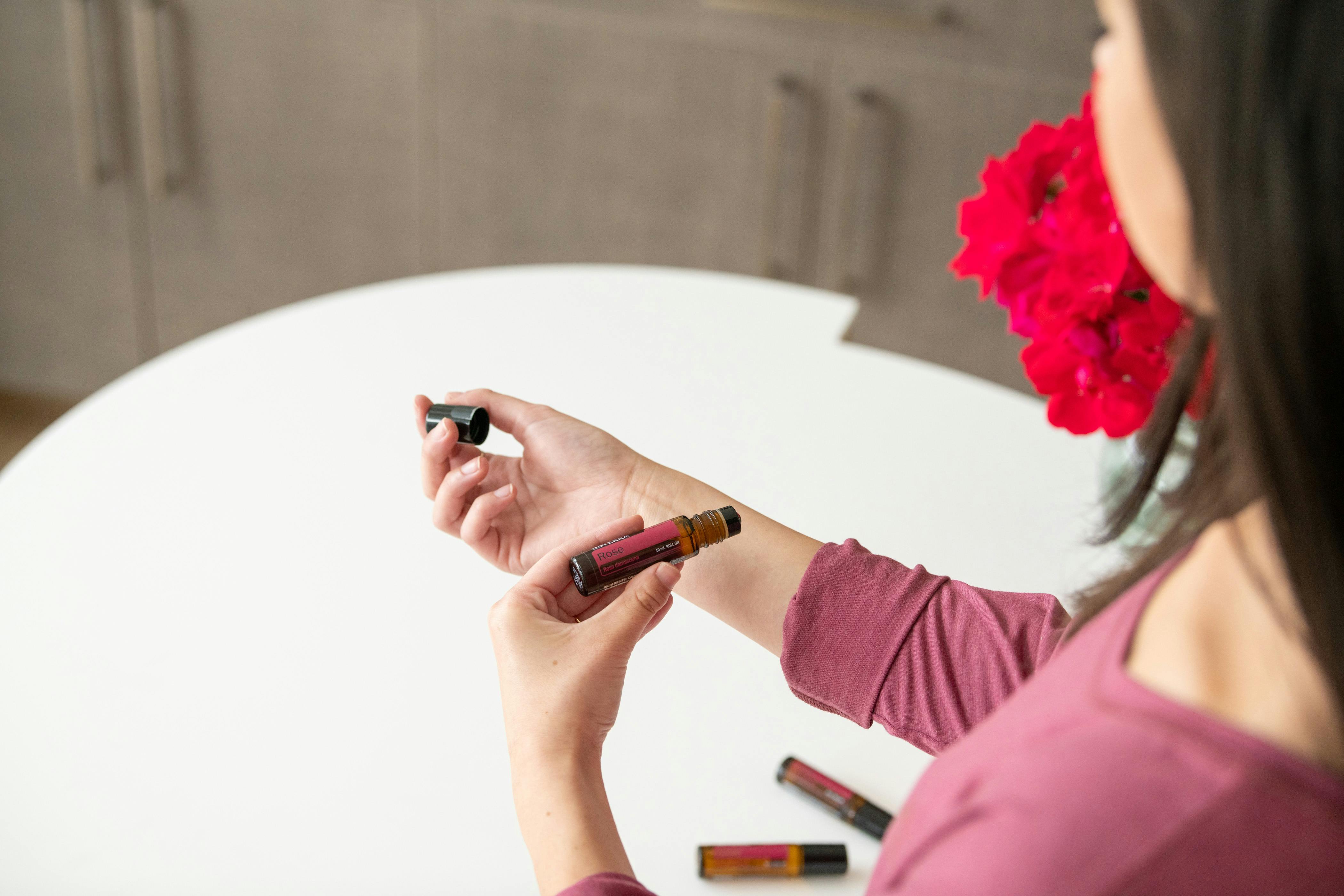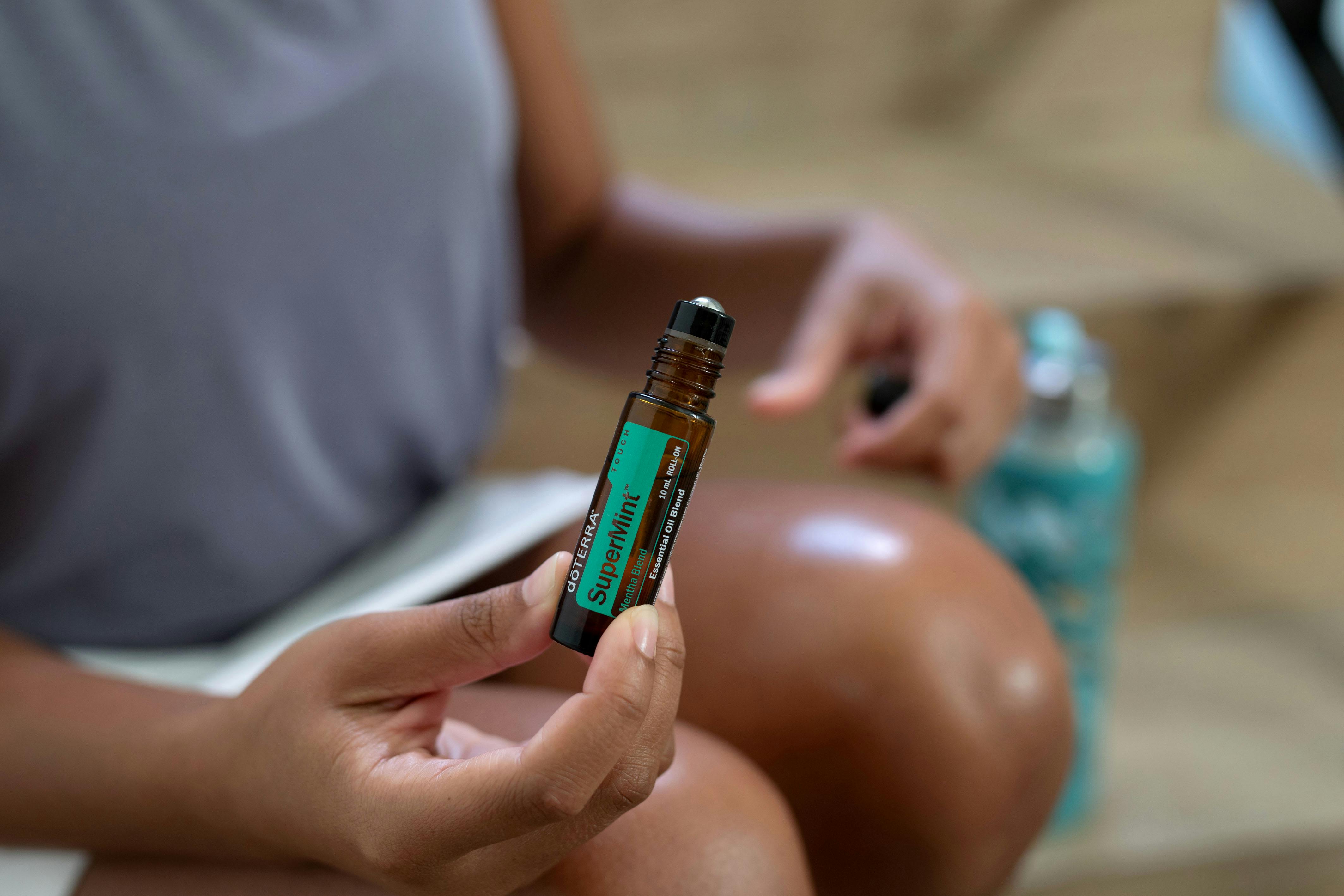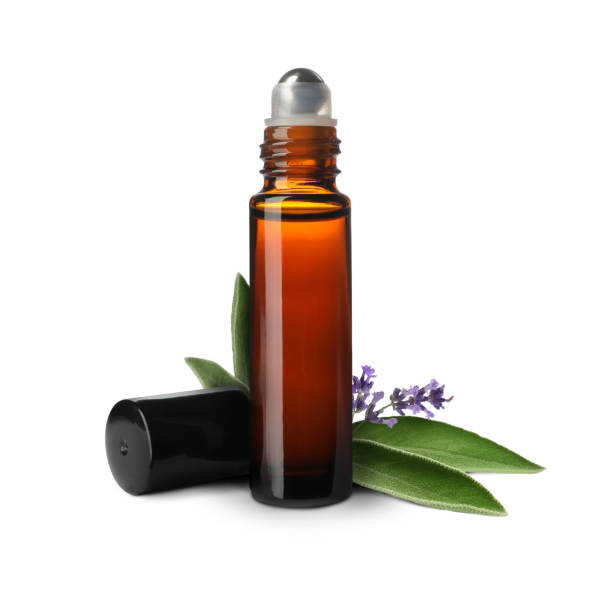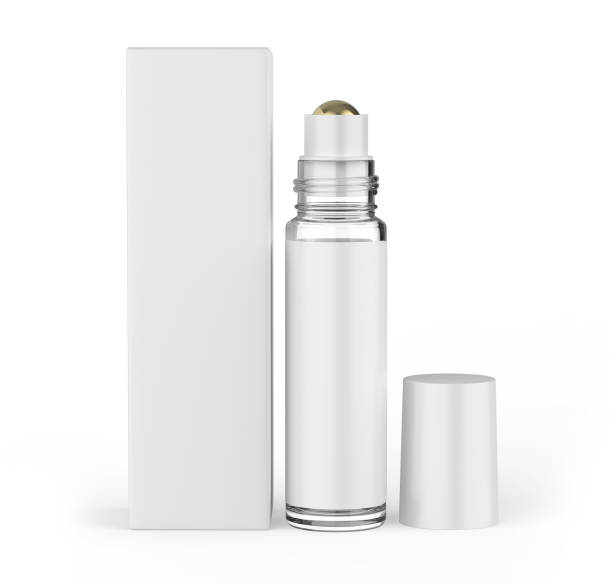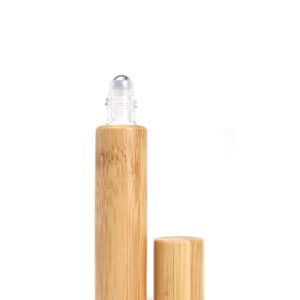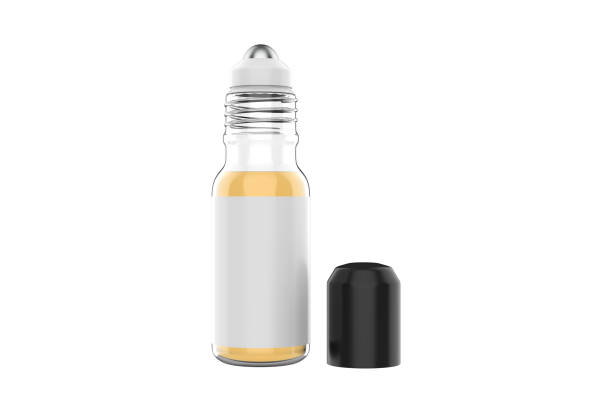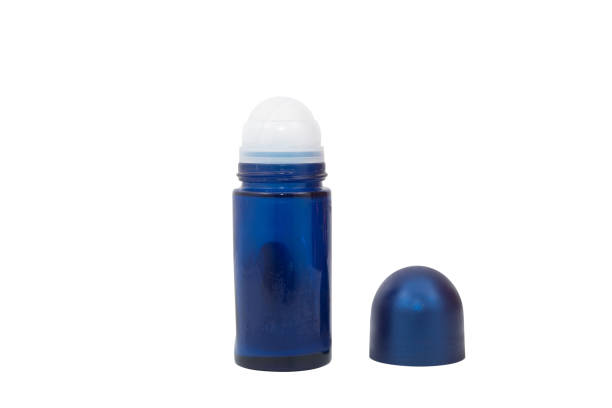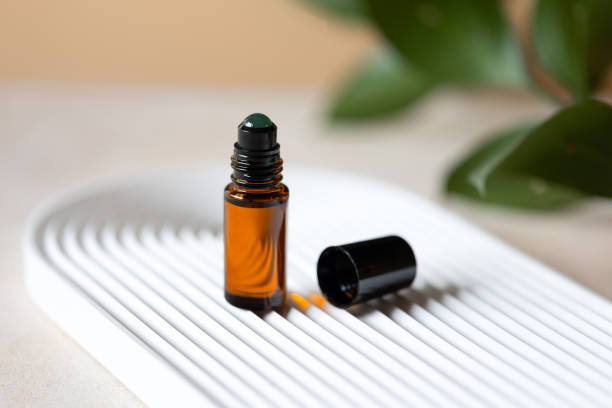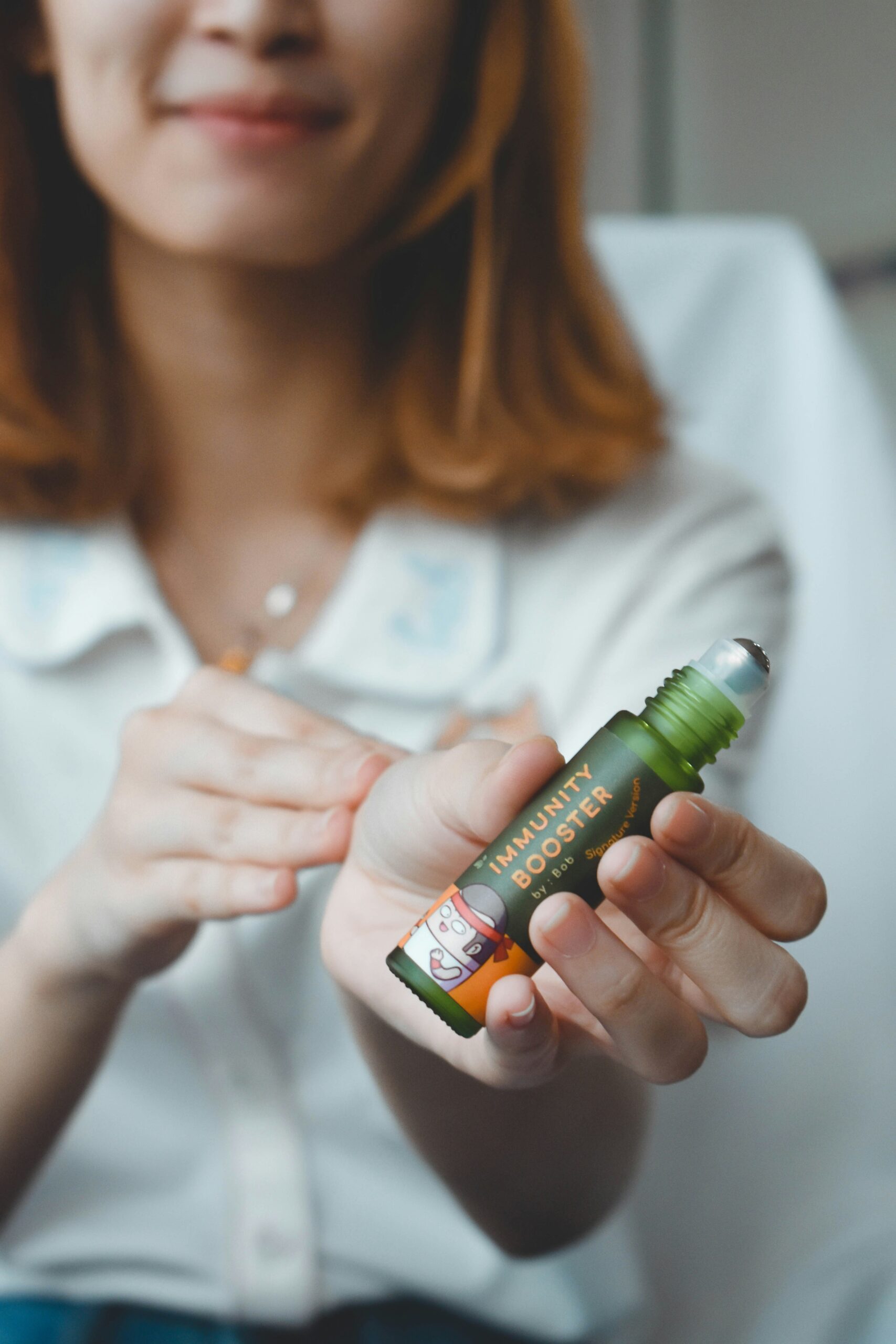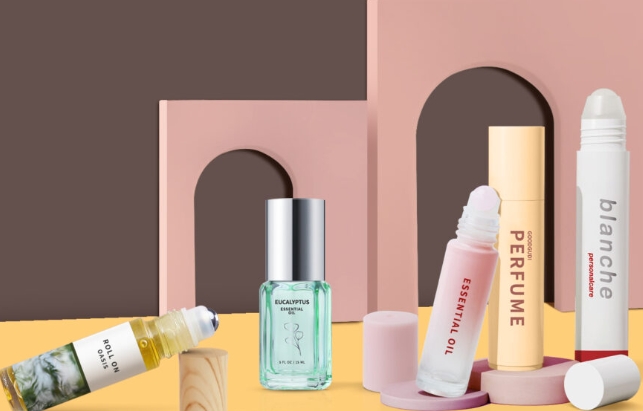Roller bottle packaging represents a pivotal advancement in the realm of product application, ushering in a new era of precision and efficiency. This packaging solution is engineered with a rotating ball mechanism that ensures consistent and controlled application, minimizing product waste. Constructed from diverse materials such as glass, plastic, and bamboo, these bottles are designed to meet the dual demands of durability and aesthetic appeal. With a growing emphasis on sustainability, the industry is witnessing a shift towards eco-friendly materials, but how this influences the overall market landscape remains an intriguing aspect warranting further exploration.
Key Takeaways
- Roller bottle packaging enhances product differentiation and user experience through precise dispensing and portability.
- Made from materials like glass, plastic and bamboo, offering various aesthetic and functional benefits.
- Customisation options available for branding and meeting specific industry needs, such as cosmetics, pharmaceuticals, and aromatherapy.
- Features like vented caps and specialised surface treatments improve usability and product preservation.
- Sustainable and eco-friendly material choices cater to environmentally conscious consumers and industry trends.
What Is a Roller Bottle?
A roller bottle is a specialised type of packaging commonly used in the pharmaceutical and biotechnology industries for the cultivation of adherent cells. Historically, roller bottles emerged as a pivotal innovation in cell culture, providing an efficient means to scale up the production of cells by maximizing surface area within a compact form.
The evolution of roller bottle design has been marked by significant innovations that enhance their functionality and adaptability in laboratory environments.
Modern roller bottle materials typically include high-quality polymers such as polystyrene and polyethylene terephthalate, chosen for their durability, optical clarity, and compatibility with various cell culture media. These materials ensure that roller bottles can withstand the mechanical stress of continuous rotation while maintaining a sterile environment conducive to cell growth.
The design of roller bottles has also seen notable advancements, with features such as vented caps and surface treatments that promote cell adhesion and proliferation.
Current roller bottle trends emphasize customisation, with manufacturers offering options that cater to specific laboratory requirements, such as size variations and surface modifications. As the demand for efficient cell culture systems grows, roller bottle innovations continue to push the boundaries of cell culture technology, ensuring their relevance in modern scientific research.
How Does a Roller Bottle Work?
Modern roller bottles, having evolved significantly in design and material, operate by leveraging a rotating mechanism to enhance cell culture efficiency. At the core of the roller bottle’s functionality is its cylindrical shape, which allows for uniform distribution of contents when rotated. This rotation not only ensures even exposure of cell cultures to the medium but also optimizes aeration critical for cell growth.
The roller bottle benefits extend to the even application of essential oil blends, where precision in delivery is paramount. Key components contributing to a roller bottle’s functionality include its cap and ball applicator. The ball, typically made of stainless steel or plastic, rolls smoothly over surfaces, dispensing the fluid evenly.
This mechanism is particularly advantageous in application techniques that require controlled dosage and minimized wastage. User experiences often highlight the convenience and efficacy provided by such packaging innovations.
- Enhanced Dosage Control: The roller mechanism allows for precise application, reducing spillage and waste.
- Uniform Application: Ensures even distribution of contents, essential for consistent results in cellular applications.
- Versatile Design: Adaptable for various formulations, from cell cultures to essential oils.
Ultimately, roller bottles exemplify sophisticated packaging solutions that marry function with user-friendly design.
What Are Roller Bottles Used for?
Roller bottles serve a multifaceted role across various industries, including cosmetics and skincare where they facilitate precise application of serums and oils.
In the realm of perfumery and aromatherapy, these containers provide an efficient delivery system for essential oils and fragrances, ensuring controlled dosage and portability.
Additionally, pharmaceutical applications leverage the roller bottle’s design for topical medication distribution, while artisanal and handmade brands utilise them to enhance product appeal and consumer experience.
Cosmetic and Skincare Brands
Why have roller bottles become a staple in the cosmetic and skincare industry? Their rise can be attributed to strategic branding strategies and packaging innovations. Roller bottles offer a unique combination of practicality and aesthetic appeal, aligning with consumer preferences for convenience and precision in product application.
This packaging solution enables companies to enhance product differentiation, crucial for gaining a competitive edge in the saturated beauty market. Incorporating roller bottles into product lines allows brands to refine their market positioning by emphasizing user-friendly and travel-friendly attributes.
These qualities are increasingly valued by consumers who demand efficiency without sacrificing luxury or efficacy. Roller bottles also facilitate precise dosage control, which is particularly important for high-value skincare formulations such as serums and essential oils.
-
Consumer Convenience: Roller bottles provide ease of use and portability, fitting seamlessly into the fast-paced lifestyle of modern consumers.
-
Innovative Design: The sleek, compact design of roller bottles enhances aesthetic appeal, supporting sophisticated branding strategies.
-
Enhanced Product Experience: The tactile application process elevates the sensory experience, fostering brand loyalty through a memorable user interaction.
Thus, the incorporation of roller bottles is a well-calculated move that aligns with evolving market dynamics and consumer expectations in the cosmetic and skincare sectors.
Perfume Companies
The versatility of roller bottles extends beyond cosmetics and skincare, finding significant application within the perfume industry. Roller bottles are increasingly employed in perfume packaging due to their ability to offer precision and convenience. This format aligns with current fragrance trends that emphasize portability and ease of use, catering to the evolving consumer preferences for on-the-go scent application.
In the realm of scent marketing, roller bottles support innovative brand differentiation. They allow companies to create unique user experiences by offering controlled and targeted fragrance application, enhancing the sensory interaction with the product. This precision not only ensures optimal scent delivery but also conserves the fragrance, making it a cost-effective solution for both consumers and manufacturers.
Moreover, roller bottles align with the growing trend of personalised perfumes. Their compact design enables brands to offer smaller, travel-friendly options, encouraging consumers to experiment with different scents without committing to a full-sized bottle.
This adaptability is crucial for brands aiming to capture the attention of a diverse audience, as it aligns with shifting consumer preferences towards customisable and sustainable product offerings. Thus, roller bottles are a strategic choice within the perfume industry for enhancing brand appeal and consumer engagement.
Aromatherapy and Essential Oils
In the sphere of aromatherapy and essential oils, roller bottles play a pivotal role in the meticulous application of these potent substances. Utilised extensively for their precision and convenience, roller bottles facilitate the creation and deployment of essential oil blends, offering a portable solution to aromatic wellness.
These containers ensure that the therapeutic properties of essential oils are preserved and effectively delivered to specific areas of the body, enhancing aromatherapy benefits. Roller bottles serve as an ideal medium for scent layering, allowing users to experiment with and personalise their aromatic experiences.
This capability is particularly valuable in crafting customised blends that cater to individual preferences and therapeutic needs. Furthermore, roller bottles act as a practical diffuser alternative, providing an on-the-go method to experience the calming and invigorating effects of essential oils without the need for stationary diffusers.
In the context of aromatherapy, roller bottles offer a myriad of advantages:
- Convenient portability: Perfect for travel and daily use, fitting easily into bags or pockets.
- Controlled application: Ensures precise dosage and reduces waste.
- Enhanced absorption: Facilitates direct skin contact, improving oil absorption and efficacy.
Pharmaceutical Industry
Within the pharmaceutical industry, roller bottles are primarily employed in the cultivation of adherent cells for vaccine production and other biological applications. These containers facilitate the scaling of cell culture operations by offering a controlled environment that enhances cell growth and viability.
The design of roller bottles allows for efficient gas exchange and optimal nutrient distribution, which are crucial for maintaining high cell yields and consistency.
Regulatory compliance is a critical aspect in the pharmaceutical use of roller bottles, ensuring that production adheres to stringent safety standards. The materials used in the production of roller bottles must meet specific criteria to prevent contamination and maintain the integrity of the biological products.
Packaging innovations continue to evolve, driven by market demands for increased production efficiencies and cost-effectiveness. These innovations often focus on enhancing the design of roller bottles to improve handling and scalability.
Safety standards dictate sterilization and material composition, ensuring that roller bottles do not compromise the quality of the cell cultures.
The ongoing development in this sector reflects a balance between meeting regulatory requirements and adapting to emerging market trends. As such, roller bottles remain a pivotal component in the pharmaceutical industry’s cell culture processes.
Artisanal and Handmade Brands
Many artisanal and handmade brands have embraced roller bottles as a versatile packaging solution for a variety of personal care and wellness products.
These brands prioritize artisan sourcing and handmade production, often opting for eco-conscious materials that align with their sustainable ethos. Roller bottles allow brands to convey their unique branding storytelling through custom design, enhancing product appeal and consumer engagement.
Artisanal brands leverage the tactile and visual aspects of roller bottles to craft personalised user experiences. This packaging format is particularly favored for products such as essential oils, fragrances, and serums, where precise application and preserving product integrity are paramount.
The following are key considerations for these brands:
- Artisan Sourcing: Selecting high-quality materials that reflect the brand’s commitment to craftsmanship and sustainability.
- Handmade Production: Emphasizing a personalised touch in every product, ensuring authenticity and attention to detail.
- Custom Design: Creating unique designs that enhance brand storytelling and distinguish products in a competitive market.
Natural Health and Wellness Brands
Some natural health and wellness brands find roller bottles indispensable for their product offerings. These containers serve as essential vessels for products that emphasize natural ingredients and holistic wellness. The design of roller bottles facilitates precise application, which is particularly advantageous for products derived from herbal remedies, such as essential oil blends and therapeutic balms. By allowing end-users to apply products directly to the skin, roller bottles enhance the efficacy of natural formulations, ensuring that the active ingredients are delivered with precision and minimal waste.
The growing trend of mindful consumption has steered brands towards packaging solutions that align with their values. Roller bottles, with their capacity to preserve the integrity of sensitive natural ingredients, meet this demand effectively. They are often crafted from materials obtained through sustainable sourcing, which resonates with consumers who prioritize environmental considerations alongside personal health benefits.
Additionally, the compact and portable nature of roller bottles makes them an ideal choice for on-the-go applications, catering to the lifestyles of health-conscious individuals seeking convenience without compromising on their wellness goals. As the natural health sector continues to evolve, roller bottles remain a key component in the packaging arsenal of mindful brands.
Promotional and Gifting Companies
In the realm of promotional and gifting companies, roller bottles have emerged as a preferred packaging choice due to their versatility and appeal. These compact containers are adept at enhancing roller bottle marketing efforts, offering a unique method to deliver products while also acting as a branding tool. Their sleek design and practicality make them ideal for a variety of gifting strategies and promotional campaigns, allowing companies to capitalise on evolving consumer preferences.
Key attributes of roller bottles in promotional and gifting contexts include:
-
Customisation Options: Roller bottles can be tailored to reflect a brand’s identity, providing ample space for logos and messages, thus enhancing branding techniques.
-
Portability: Their small size makes them easy to distribute at events or as part of direct mail campaigns, ensuring the brand stays top-of-mind with consumers.
-
Versatility: Suitable for a wide range of products, from essential oils to perfumes, enabling companies to reach diverse market segments.
Promotional and gifting companies leverage roller bottles not only for their functional benefits but also for their ability to engage consumers in a meaningful way.
What Are the Common Material Options for a Roller Bottle Body?
In the realm of roller bottle packaging, material selection is paramount, with common options including glass, plastic, bamboo, and polypropylene (PP).
Glass is favored for its non-reactive properties, offering excellent compatibility with essential oils and fragrances, while plastic, particularly PET, is valued for its lightweight and shatterproof characteristics.
And natural materials like bamboo serve as eco-friendly options, whereas PP’s versatility and resistance to chemical leaching make it suitable for a variety of applications.
Glass
Glass, renowned for its clarity and impermeability, stands as a prominent choice for roller bottle bodies in the industry. Its inherent glass durability ensures that the bottles are resilient to wear and tear, making them ideal for long-term use.
Glass manufacturing processes are refined to produce containers that not only uphold structural integrity but also maintain the visual appeal, or glass aesthetics, intrinsic to glass products. The aesthetic quality of glass is unparalleled, offering a premium appearance that enhances consumer perception.
Glass safety is another critical factor that bolsters its application in packaging. Unlike some materials, glass does not react with the contents, preserving the purity of the product. Furthermore, glass recycling contributes to environmental sustainability, as it can be infinitely recycled without loss of quality, reducing its ecological footprint.
In the context of roller bottle packaging, glass provides several advantages:
- High resistance to chemical interactions: Ensures product integrity.
- Eco-friendly characteristics: Supports sustainable packaging initiatives.
- Premium look and feel: Elevates brand image.
The combination of these attributes makes glass an enduring favorite for companies seeking a sophisticated yet environmentally responsible packaging solution.
Plastic
Plastic emerges as a versatile and cost-effective material option for roller bottle bodies, widely adopted across various industries due to its adaptability and affordability. The prevalence of plastic in skincare packaging innovations is largely driven by its lightweight properties and ease of production. As consumer preferences shift towards more eco-conscious choices, the demand for recyclable materials and sustainable sourcing has surged. This has prompted manufacturers to explore bio-based plastics and other environmentally friendly alternatives, aligning with both market competition and regulatory pressures.
In the pursuit of sustainability, plastic roller bottles are often crafted from polyethylene terephthalate (PET) or high-density polyethylene (HDPE), both of which offer recyclability and durability. These materials are not only efficient in production but also provide a robust barrier against external contaminants, preserving the integrity of the product within.
Despite the environmental concerns traditionally associated with plastic, ongoing advancements in material science continue to enhance its appeal, making it a cornerstone of modern packaging strategies. This adaptability ensures that plastic remains a formidable contender in the roller bottle market.
Bamboo
Bamboo, as an emerging material for roller bottle packaging, steps into the spotlight with its unique blend of sustainability and aesthetic allure. The natural and renewable attributes of bamboo make it an attractive choice for environmentally conscious brands seeking bamboo sustainability. Its rapid growth and minimal farming requirements contribute to its low environmental impact, making bamboo an ideal alternative to conventional materials. Furthermore, bamboo aesthetics enhance product differentiation with its natural texture and color, providing a premium appearance that resonates with eco-friendly consumers.
However, selecting bamboo for roller bottle bodies involves intricate considerations regarding bamboo sourcing and bamboo production. Sustainable sourcing requires careful assessment of harvesting practices to ensure replenishment and ecosystem balance. Additionally, production processes must adhere to strict quality and environmental standards to maintain the integrity of the material while meeting industry demands.
PP
Among the diverse array of materials utilised for roller bottle bodies, one finds that polypropylene (PP) stands out due to its versatile properties and widespread availability.
Polypropylene offers a robust balance of chemical resistance and mechanical strength, making it an ideal choice for roller bottle applications. Its lightweight nature contributes significantly to the roller bottle benefits, offering ease of transport and user-friendly handling.
Furthermore, PP’s ability to resist moisture and contamination aligns well with the hygiene demands of the cosmetic and pharmaceutical industries, where roller bottle trends continue to evolve.
Historically, the introduction of PP marked a significant advancement in the roller bottle history, as it allowed for more cost-effective production without compromising the quality or safety of the contents.
Roller bottle innovations have often leveraged PP due to its adaptability to various processing methods, including injection molding and extrusion, which are pivotal in creating diverse bottle shapes and sizes.
- Chemical Resistance: Essential for protecting the integrity of sensitive formulations.
- Lightweight: Enhances portability and ease of use, crucial for everyday applications.
- Cost-Effective: Supports large-scale production, influencing current market trends.
PET
Polyethylene terephthalate (PET) is another prominent material option for roller bottle bodies, favored for its excellent clarity and strength. Its optical properties provide a premium aesthetic, aligning with consumer preferences for visually appealing packaging.
The material’s robustness ensures durability throughout the product lifecycle, addressing distribution challenges that can lead to product damage. PET’s lightweight nature contributes to cost-effective shipping, a factor critically analyzed in market demand analysis.
Eco friendly innovations have propelled PET into the spotlight, as it is recyclable and can be integrated into a circular economy model. This aligns with growing consumer demands for sustainable packaging solutions.
Nevertheless, the recycling process for PET must be carefully managed, as contamination can hinder its effectiveness, presenting an ongoing challenge for manufacturers.
In terms of custom packaging solutions, PET offers versatility in design, enabling brands to create unique shapes and sizes that resonate with their target demographic.
This adaptability meets the diverse needs of the market, from luxury to everyday products. However, the industry must navigate the intricacies of balancing customisation with cost-efficiency, ensuring that PET remains a viable option amidst evolving market dynamics.
The continuous innovation in PET’s application further cements its position in roller bottle packaging.
More info:Glass Roller Bottle, Plastic, or Bamboo: What’s Best for Your Business?
What Are the Common Material Options for the Roller Balls?
When considering material options for roller balls in packaging applications, stainless steel is favored for its durability and corrosion resistance, making it suitable for use with a wide range of formulations.
Plastic roller balls offer a cost-effective and lightweight alternative, though they may not be as robust as metal options.
Glass is also used for its chemical inertness, making it an ideal material for the roller balls.
Stainless Steel
Stainless steel, a favored material for roller balls, is renowned for its durability and corrosion resistance, making it an ideal choice in roller bottle packaging. The inherent properties of stainless steel contribute to its unparalleled durability, ensuring the roller ball retains its functionality and aesthetic appeal over time.
Aesthetic considerations are paramount in packaging; stainless steel provides a sleek, modern look that maintains its luster through extensive use, enhancing the overall presentation of the product.
The versatility of stainless steel is another significant advantage. It can be manufactured in various sizes and finishes to suit a wide range of product specifications, catering to diverse industry needs. This adaptability in stainless steel manufacturing processes allows for customisation without compromising structural integrity.
Moreover, its sustainable nature, being fully recyclable, aligns with the growing demand for environmentally-conscious packaging solutions.
Incorporating stainless steel in roller bottle design offers several notable benefits:
- Enhanced Durability: Stainless steel can withstand frequent use and environmental stressors.
- Aesthetically Pleasing: Its sleek appearance elevates the product’s visual appeal.
- Versatile and Sustainable: Easily manufactured in different forms while being eco-friendly.
Stainless steel remains a top choice for brands prioritizing performance and longevity in their packaging solutions.
Plastic
While stainless steel offers unmatched durability and a sleek aesthetic, plastic materials provide a different set of advantages in roller bottle packaging. Polypropylene (PP) and polyethylene (PE) are among the most prevalent plastic options for roller balls due to their flexibility, lightweight nature, and cost-effectiveness.
These materials align with current sustainability initiatives as they are recyclable, supporting the industry’s shift towards eco-friendly practices.
From a market analysis perspective, consumer preferences are increasingly leaning toward packaging innovations that offer convenience without compromising environmental responsibility. Plastic roller balls meet these criteria by being less prone to breakage and leakage compared to their metal counterparts, thus enhancing product longevity and reducing waste.
Design trends indicate a rising demand for customisable and vibrant packaging, where plastic’s versatility plays a pivotal role. It allows for a variety of colors and shapes, which can be tailored to brand-specific aesthetics and consumer expectations.
Moreover, the integration of advances in polymer technology has led to the development of biodegradable plastics, further aligning with sustainability goals.
Glass
Glass remains a prominent choice in roller bottle packaging, offering a blend of aesthetic appeal and robust functional properties. The glass material, with its unparalleled glass aesthetics, delivers a premium look, enhancing the perceived value of the product.
In terms of glass manufacturing, advancements have enabled the production of glass roller balls that are not only smooth but also precise, ensuring optimal application of the product contained within. This meticulous process guarantees each glass roller ball’s consistency in size and performance, a vital aspect for maintaining brand reputation and consumer trust.
Glass benefits extend beyond aesthetics; its chemical inertness ensures that it does not react with the contents, preserving the purity and efficacy of the formulations. This is critical for sensitive products such as essential oils and serums, where product integrity is paramount.
Moreover, glass durability is notable, providing resistance to scratches and maintaining its clarity over time.
- Glass sustainability: As a recyclable material, glass supports eco-friendly packaging initiatives.
- Enhanced consumer experience: Glass’s smooth surface offers a pleasant tactile experience.
- Market differentiation: Glass’s premium appearance distinguishes products in saturated markets.
Screw Caps for the Roller Bottles
The versatility of screw caps serves as a foundational element in roller bottle packaging, providing a secure and reliable sealing mechanism that is essential for maintaining product integrity.
Screw cap durability is paramount, ensuring that the contents remain untainted by external factors, such as air or contaminants. This is achieved through robust screw cap designs that accommodate various bottle neck finishes, optimizing the sealing surface for a tight fit.
The selection of screw cap materials further enhances performance, with options ranging from high-density polyethylene to polypropylene, each offering specific benefits in terms of chemical resistance and longevity.
Screw cap functionality extends beyond sealing, offering ease of use for consumers. The threaded mechanism allows for repeated opening and closing without compromising the seal, an advantage in markets where product preservation is critical.
Furthermore, screw cap sealing is a crucial consideration in preventing leaks, which is vital for products such as essential oils and serums commonly found in roller bottles.
- Screw cap designs: Tailored to different neck finishes for a precise fit.
- Screw cap materials: Chosen based on durability and chemical resistance.
- Screw cap functionality: Ensures repeated use without degrading the seal.
Customisation Options of Roller Bottles
Customisation options for roller bottles are pivotal in aligning packaging with brand identity and consumer preferences.
Key considerations include labeling, which involves advanced techniques such as digital printing for high-resolution graphics, as well as color and design variations that can enhance visual appeal and market differentiation.
Additionally, the incorporation of logo printing and the strategic selection of size and capacity are essential for optimizing functionality and brand recognition in competitive markets.
Labeling
A myriad of customisation options exists for the labeling of roller bottles, each catering to different branding needs and regulatory requirements.
In recent years, label design trends have significantly evolved, reflecting both aesthetic innovation and functionality. Companies are increasingly prioritizing eco-friendly materials to align with consumer preferences for sustainability. Such materials not only enhance the brand’s image but also comply with regulatory standards that focus on environmental impact.
Printing techniques play a crucial role in the execution of these designs, with advancements such as digital printing and laser etching offering high precision and versatility. These methods allow for intricate graphics and vibrant colors, ensuring labels are both visually appealing and durable.
Moreover, regulatory compliance is paramount, necessitating labels to include essential information such as ingredients, usage instructions, and safety warnings in a clear and legible manner.
Key considerations for roller bottle labeling include:
- Use of eco-friendly inks and recyclable substrates to minimize environmental impact.
- Incorporation of tactile elements, such as embossing, to enhance user experience.
- Adaptability to various printing techniques to accommodate complex designs and high-resolution imagery.
These elements collectively ensure that labeling solutions not only meet industry standards but also resonate with target audiences.
Color and Design
In the realm of roller bottle customisation, color and design serve as pivotal elements that significantly impact brand identity and consumer engagement. The strategic use of color psychology in roller bottle packaging can evoke specific emotions and perceptions, aligning with the intended branding identity. For instance, blue hues often convey trust and reliability, while vibrant reds can stimulate energy and urgency. These color choices are essential not only for capturing attention but also for reinforcing brand values and narratives.
Design trends in roller bottles are evolving, with an increasing emphasis on minimalism and sustainability. Sleek, clean lines coupled with eco-friendly materials enhance the user experience and material aesthetics, appealing to environmentally-conscious consumers. Incorporating innovative textures and finishes can further elevate the tactile interaction, making the product more memorable and desirable.
Attention to branding identity through design ensures that the roller bottles resonate with target audiences, effectively differentiating products in a competitive market. By harmonizing color schemes and design elements, companies can create a cohesive and compelling package that enhances consumer engagement.
Ultimately, the fusion of color and design in roller bottles becomes a powerful tool for conveying brand ethos and enhancing overall user experience.
Logo Printing
Logo printing serves as a critical component in the customisation options available for roller bottles, enabling brands to enhance recognition and convey their distinct identity. By incorporating strategic logo design, companies can effectively align their branding strategy with the innovative packaging of roller bottles.
The choice of print techniques plays a significant role in the clarity and durability of the logo, ensuring that it withstands handling and environmental factors.
Recent advancements in packaging innovation offer diverse printing options, such as digital, screen, and pad printing. Each technique varies in cost-effectiveness and suitability based on the intricacy of the design and the material of the roller bottle. Additionally, the application of color psychology in logo design can influence consumer perception, prompting emotional responses that align with brand values.
- Digital Printing: Offers high-resolution images and is ideal for complex logo designs.
- Screen Printing: Provides vibrant colors and is renowned for its longevity on different materials.
- Pad Printing: Ideal for curved surfaces, ensuring accurate logo placement on roller bottles.
Through the strategic implementation of these elements, brands can create a cohesive and impactful presentation that resonates with target audiences, thus solidifying their market position.
Size and Capacity
Beyond the aesthetics and branding achieved through logo printing, the size and capacity of roller bottles play a pivotal role in their functional and practical customisation options. In the domain of roller bottle packaging, capacity variations cater to diverse consumer needs, aligning with specific size preferences and volume considerations. The industry recognizes the significance of these factors, as they directly influence the usability and efficiency of the product. Adhering to packaging standards, manufacturers offer roller bottles in multiple sizes to accommodate different usage guidelines.
Customised options ensure that the roller bottles meet varied consumer demands, from personal to professional uses. Volume considerations are crucial, especially when considering the formulation’s viscosity and intended application frequency. Packaging standards necessitate that every bottle size is not only functional but also complies with safety and quality benchmarks. As a result, size preferences are meticulously evaluated during the product development phase to provide optimal solutions tailored to user specifications. This detailed approach ensures that roller bottles remain versatile in their application across various sectors.
What Are the Benefits of Roller Bottle Packaging?
Roller bottle packaging offers significant advantages across various dimensions, including enhanced convenience and portability, which are crucial for on-the-go consumers.
The precision in application afforded by roller bottles ensures efficient use of the product, making them ideal for custom blends that require targeted delivery.
Furthermore, these packaging solutions contribute to better product preservation and are recognized for their eco-friendly attributes and cost-effectiveness, aligning with the growing demand for sustainable packaging options.
Convenience and Portability
Offering a seamless blend of convenience and portability, roller bottle packaging presents multiple benefits, particularly for those in the cosmetic and pharmaceutical industries.
The user friendly design of these bottles ensures ease of use, enhancing the user experience by allowing precise dispensing of product with minimal effort. This design not only caters to consumer preferences but also aligns with functional aesthetics, offering a sleek and modern appearance.
Roller bottles are inherently travel friendly options, designed for compact storage. Their size and shape make them ideal for personal care products, allowing users to carry their desired formulations without the bulk of traditional packaging. Such portability is invaluable for consumers who require on-the-go accessibility, whether for daily commutes or long-haul travel.
Key advantages of roller bottle packaging include:
- User friendly design: Simplifies application process, enhancing consumer satisfaction.
- Travel friendly options: Ideal for portability, accommodating the lifestyle of mobile users.
- Compact storage: Efficiently utilises space, making it convenient for both retail environments and personal storage.
Incorporating these elements, roller bottle packaging not only meets consumer demands but also provides a practical solution for brands aiming to improve their product offerings.
Precision in Application
Frequently lauded for its precision, roller bottle packaging is distinguished by its ability to deliver controlled and consistent application of liquid formulations. This precision is paramount in application techniques, allowing users to apply products such as essential oils, serums, or fragrances with exceptional accuracy.
The roller ball mechanism ensures an even spread, minimizing waste and enhancing dosage control, a critical factor in maintaining the efficacy of the product. In industries where product performance is directly linked to precise application, roller bottles have become integral.
By providing a tactile and controlled dispensing method, they elevate the user experience, ensuring that each application is consistent with the intended dosage. This precision not only enhances the functional benefits of the product but also fosters consumer trust, as users receive predictable results with every use.
Moreover, roller bottle packaging facilitates market differentiation for brands aiming to stand out in a competitive landscape. By offering superior application techniques and dosage control, brands can position their products as premium offerings, appealing to consumers who prioritize precision and efficacy in their personal care routines.
Consequently, roller bottles are not merely a packaging choice but a strategic component in product positioning and brand identity.
Perfect for Custom Blends
Leveraging the unique capabilities of roller bottle packaging, brands can offer custom blends that cater specifically to individual consumer needs. This packaging solution enables the creation of bespoke products that feature unique fragrance combinations, ideal for personalizing essential oils and other aromatic mixtures.
The primary benefit of roller bottle packaging lies in its ability to facilitate precise blending techniques, allowing for the meticulous crafting of formulations that meet the specific preferences and requirements of each user.
The roller bottle advantages extend beyond mere application, providing a versatile and efficient medium for storing and dispensing custom blends. The design ensures that the product is not only easy to use, but also maintains the integrity of the blend. This is particularly beneficial for those seeking to explore the myriad possibilities of essential oil combinations without compromising quality.
- Custom Blend Benefits: Tailor-made mixes tailored to consumer preferences for a personalised experience.
- Roller Bottle Advantages: Convenient design for optimal blending and application of essential oils.
- Unique Fragrance Combinations: Create distinct and memorable scents through personalised blending techniques.
Better Product Preservation
In the realm of product preservation, roller bottle packaging offers significant advantages that directly contribute to maintaining the quality and longevity of the contents. The airtight seal and controlled dispensing mechanism of roller bottles prevent exposure to environmental factors such as air and contaminants, which can degrade product efficacy. This innovative packaging solution aligns with sustainability practices by reducing waste through precise application, minimizing the need for preservatives traditionally required in less secure packaging.
Furthermore, roller bottles have become a focal point in packaging innovations, reflecting a shift in consumer preferences towards solutions that ensure product integrity. The tactile feedback from the roller mechanism provides users with a sensory assurance of quality, which is increasingly valued in personal care and cosmetic markets. As market growth continues to expand in these sectors, the demand for packaging that offers superior preservation is likely to rise.
Design trends in roller bottle packaging also emphasize the balance between functionality and aesthetics, catering to a discerning consumer base. The compact, portable design not only enhances user experience but also supports industry efforts in sustainability.
Consequently, roller bottles represent a converging point of preservation efficacy and market appeal.
Eco-friendly and Cost-effective
Adopting roller bottle packaging presents a dual advantage of being eco-friendly and cost-effective, making it an attractive choice in various industries.
This packaging solution epitomizes the growing trend towards sustainable materials, meeting both consumer preferences and market demand for eco packaging. By using materials that are biodegradable or recyclable, roller bottles significantly reduce the environmental footprint compared to traditional packaging options.
This shift not only aligns with ecological responsibility but also enhances brand reputation among environmentally conscious consumers.
In terms of cost efficiency, roller bottle packaging is noteworthy for its minimalistic design, which often requires fewer raw materials and energy during production.
This reduction in resource consumption translates into lower manufacturing costs. Additionally, the streamlined design reduces shipping expenses due to its lightweight nature, further contributing to cost savings.
The benefits of roller bottle packaging can be summarized as follows:
- Sustainable Materials: Utilises eco-friendly resources, aligning with consumer preferences for green products.
- Cost Efficiency: Reduces production and shipping costs through resource-efficient design.
- Market Demand: Meets the increasing demand for eco packaging solutions in the marketplace, enhancing competitive advantage.
How to Choose the Right Roller Bottle for Your Product?
Selecting the optimal roller bottle for your product necessitates a comprehensive evaluation of specific factors, starting with accurately identifying the product type, which informs the choice of suitable material such as glass or plastic to ensure product compatibility and stability.
Additionally, determining the appropriate size and volume is critical to meet consumer usage patterns and regulatory compliance, while the roller ball material, often stainless steel or plastic, should be chosen based on its interaction with the product formulation.
Identify Your Product Type
Determining the appropriate roller bottle for your product requires a comprehensive understanding of your product type and its specific characteristics. The alignment of product types with the correct packaging aesthetics is essential to ensure functionality and marketability.
Analyzing your product’s viscosity, volatility, and shelf stability can dictate the optimal type of roller bottle. For instance, products like essential oils, serums, or perfumes require differing dispensing mechanisms and bottle features.
Conducting a thorough market analysis offers insights into current consumer preferences. Understanding these preferences is crucial for selecting a roller bottle that not only meets industry standards but also resonates with the target demographic.
For example, a preference for eco-friendly packaging solutions can influence the choice of material and design.
Industry standards also play a pivotal role in guiding the selection process. Compliance with regulatory norms ensures that your product is not only appealing but also safe for consumer use.
Consider the following factors when identifying your product type:
- Product Viscosity: Dictates the roller ball size and functionality.
- Target Demographic Preferences: Influences the design and aesthetic choices.
- Regulatory Compliance: Ensures the bottle meets safety and quality standards.
Understanding these elements is imperative for making informed decisions in roller bottle packaging selection.
Select the Material
Choosing the right material for roller bottle packaging is crucial, as it directly impacts the product’s integrity, usability, and appeal. Key considerations include material sustainability, cost comparison, and aesthetic appeal.
Glass and plastic are common materials, each offering distinct advantages and challenges. Glass is heralded for its superior resistance to chemical interactions and high-end aesthetic appeal, making it a prime choice for premium products. However, its production is less energy-efficient, posing sustainability concerns and higher costs.
Plastic, particularly PET and HDPE, offers significant cost advantages and material sustainability benefits, being lightweight and recyclable. It also provides diverse design possibilities, enhancing user preferences with varied shapes and colors. The primary trade-off lies in its lower barrier properties compared to glass, which can affect the shelf-life of certain formulations.
A comprehensive cost comparison should balance upfront material expenses with long-term environmental impact. Ultimately, understanding user preferences and aligning with sustainability goals ensures the selection of a material that enhances both product integrity and marketability.
Determine Size and Volume
After assessing the material options for roller bottle packaging, the next critical step involves evaluating the appropriate size and volume for your product. Selecting the right roller bottle dimensions is essential to ensure optimal user experience and storage efficiency.
Volume measurement techniques play a pivotal role in determining the correct capacity that aligns with your product’s requirements. It’s crucial to balance between too little and too much product, which can significantly impact cost-effectiveness and consumer satisfaction.
Incorporating size selection guidelines allows you to tailor the roller bottle to your product’s unique characteristics. Consider factors such as viscosity, dispensing rate, and intended usage frequency.
Additionally, packaging efficiency strategies should be employed to minimize waste while maximizing functionality and aesthetic appeal.
Here are some key considerations:
- Evaluate Product Viscosity: Thicker liquids may require larger or custom sizing options to facilitate smooth dispensing.
- Anticipate User Needs: Determine average usage patterns to select an appropriate volume that avoids frequent refills.
- Align with Brand Aesthetics: Ensure the roller bottle dimensions are consistent with your brand image and market positioning.
Choose the Roller Ball Material
Selecting the optimal roller ball material is a fundamental aspect of designing roller bottle packaging that aligns with both functional and aesthetic requirements. The material chosen impacts roller ball durability, ensuring it withstands repeated use without degradation.
Stainless steel, glass, and plastic are common materials, each offering distinct benefits and considerations. Stainless steel is renowned for its robustness and corrosion resistance, contributing to superior roller ball durability. However, sourcing stainless steel may entail higher costs.
Glass roller balls provide a smooth application and are chemically inert, making them ideal for essential oils and other sensitive formulations. This enhances roller ball compatibility, ensuring that the product’s efficacy is preserved. On the downside, glass is more fragile.
Plastic roller balls, often made from materials like polypropylene, offer an economical choice with sufficient roller ball functionality. They are lightweight, although they may not match the premium roller ball aesthetics provided by glass or stainless steel.
The selection process should also consider roller ball sourcing, ensuring materials meet regulatory standards and are readily available.
Ultimately, the choice of roller ball material should harmonize with the product’s intended use, user experience, and brand image.
Consider Cap Type
Having established the significance of roller ball material, attention must now be directed towards the selection of the cap type, a critical component in roller bottle packaging.
The cap’s role transcends mere closure, influencing product preservation and user experience. Cap functionality is paramount, as it ensures secure sealing, preventing leakage and maintaining product integrity. An effective cap sealing mechanism is vital for volatile or sensitive formulations, providing an airtight seal that safeguards against contamination.
Cap durability is another essential consideration. The cap must withstand repeated opening and closing, resisting wear that could compromise its sealing capabilities. Materials such as polypropylene or high-density polyethylene are often employed due to their robust nature and resilience.
Cap aesthetics should not be overlooked, as the cap contributes to the overall visual appeal of the product. Options for cap customisation can enhance brand identity, offering an opportunity for differentiation in a competitive market.
Key considerations when selecting a cap type include:
- Cap functionality: Ensuring effective sealing and ease of use.
- Cap durability: Choosing materials that withstand frequent use.
- Cap aesthetics: Aligning with brand image through customisation options.
These elements collectively determine the cap’s suitability for a given product.
Think About Design and Aesthetics
Design and aesthetics play a pivotal role in selecting the right roller bottle for your product, as they significantly impact consumer perception and brand positioning. The choice of a roller bottle’s design should align with your branding strategies, ensuring the product not only stands out on the shelf but also resonates with your target audience.
Minimalist aesthetics can convey elegance and sophistication, often appealing to consumers who value simplicity and functionality. This approach is particularly effective for luxury or high-end products where subtlety is key.
Conversely, opting for vibrant colors can attract a different demographic, emphasizing energy and vitality, which is suitable for products targeting a younger audience or those promoting wellness. Unique shapes of roller bottles can serve as a differentiator in a saturated market, offering a tactile user experience that enhances the product’s appeal. These shapes, while aesthetically pleasing, must also consider ergonomic factors to ensure ease of use.
Integrating design elements that reflect your brand’s ethos can strengthen brand recognition and customer loyalty. Therefore, balancing visual appeal with practicality is crucial in the design phase, ensuring the roller bottle not only captivates visually but also meets consumer expectations in terms of usability.
Evaluate Functionality
When evaluating functionality in roller bottle packaging, it is imperative to consider the compatibility of materials with the product’s formulation to prevent any adverse reactions or compromises in product integrity. The selection process should involve a meticulous analysis of material properties, ensuring they align with the chemical composition of the contents.
Furthermore, user experience is paramount; thus, conducting functionality testing is essential to ensure that the roller mechanism delivers the product efficiently and smoothly.
To enhance decision-making, consider the following:
-
User Feedback: Gathering insights from end-users can provide invaluable information about practical issues and preferences, guiding improvements in roller design and usability.
-
Market Analysis: An in-depth examination of competitors and current market offerings can reveal prevailing design trends and potential gaps in functionality that your product can capitalise on.
-
Design Trends: Keeping abreast of the latest innovations in roller bottle design can offer a competitive edge, ensuring that the packaging meets contemporary consumer expectations.
Incorporating these considerations into the development process not only refines the product’s functionality but also optimizes the overall user experience.
Assess Sustainability
In the quest to enhance packaging functionality, another critical aspect to consider is sustainability. As consumer awareness regarding environmental issues rises, the demand for eco-friendly innovations in roller bottle packaging becomes more pronounced. Selecting recyclable materials is a pivotal factor, as it ensures that the packaging can be efficiently processed at the end of its life cycle, reducing waste accumulation.
Understanding the life cycle of roller bottle packaging is essential to accurately assess its environmental impact. This involves evaluating the sourcing of raw materials, manufacturing processes, transportation logistics, and disposal or recycling potential. Each phase contributes to the overall carbon footprint, and optimizing these can lead to significant sustainability improvements.
The integration of eco-friendly innovations, such as biodegradable components or renewable energy in manufacturing, can further enhance sustainability. However, it is crucial to balance these innovations with performance and cost considerations to ensure feasibility.
Incorporating sustainability into packaging design not only aligns with industry trends but also resonates with environmentally conscious consumers. By prioritizing recyclable materials and minimizing the carbon footprint, businesses can effectively meet market demands while contributing to a more sustainable future.
This, in turn, can enhance brand reputation and secure a competitive edge in the market.
Test for Compatibility
Selecting the right roller bottle for your product necessitates a thorough compatibility test, ensuring the packaging aligns with the product’s physical and chemical properties. This process involves evaluating the roller bottle materials for their chemical resistance to prevent any adverse reactions with the product.
The integrity of the materials can directly impact the product shelf life, necessitating rigorous chemical resistance testing to ensure that the product remains effective and stable over time.
Key considerations include:
-
Roller bottle materials: Evaluate whether glass, plastic, or bamboo are best suited to withstand the chemical properties of your formulation.
-
Packaging safety standards: Ensure compliance with industry-wide safety regulations to protect consumers and maintain brand credibility.
-
User experience feedback: Gather insights from consumer testing to understand the usability and functionality of the roller bottle in real-world scenarios.
Conducting these tests not only safeguards the product’s quality but also enhances user satisfaction by ensuring the packaging performs optimally throughout its intended use.
Feedback from user experience testing can provide valuable insights into potential improvements, further aligning the packaging with consumer expectations and industry standards.
Ultimately, the compatibility test is a pivotal step in achieving a successful product launch.
Packaging Design Tips for Roller Bottles
Crafting an effective packaging design for roller bottles requires a meticulous understanding of both aesthetic appeal and functional utility. The visual allure of roller bottle packaging plays a crucial role in capturing consumer attention and fostering brand affinity. Incorporating unique design elements can significantly enhance user experience by making the product more intuitive and pleasant to use.
A successful design not only meets the practical needs of dispensing liquid products but also distinguishes itself in a saturated marketplace through thoughtful market differentiation.
Packaging innovation is paramount in achieving this differentiation. By integrating cutting-edge materials or novel shapes, brands can set themselves apart from competitors. This innovation should align with the brand’s storytelling, ensuring that the packaging conveys the brand’s core message and values.
Design choices such as color schemes, typography, and imagery must be coherent with the brand’s identity, enabling a consistent narrative that resonates with consumers.
Furthermore, roller bottle packaging should be ergonomically considered, facilitating ease of use and enhancing the tactile experience. Attention to these details ensures that the packaging not only serves its primary function but also becomes an integral part of the product’s overall appeal, driving consumer engagement and loyalty.
Sustainability in Roller Bottle Packaging
Sustainability’s growing importance within the packaging industry has led to a significant shift towards eco-friendly solutions in roller bottle packaging. The adoption of eco-friendly innovations, including the use of biodegradable materials, is driving the transformation of this sector. The integration of these materials ensures that roller bottles not only meet functional requirements but also reduce environmental impact.
Moreover, recycling programs are becoming pivotal, enabling manufacturers to implement closed-loop systems that emphasize supply chain sustainability. Industry stakeholders are increasingly focusing on creating awareness among consumers about the benefits of sustainable packaging. This involves educating them on the lifecycle of roller bottles and the importance of participating in recycling initiatives.
As a result, companies are exploring advanced manufacturing techniques that minimize resource consumption and waste. Key strategies in sustainable roller bottle packaging include:
- Eco-friendly innovations: Development of new biodegradable materials that decompose without harming the environment.
- Recycling programs: Initiatives that encourage consumers to return empty bottles for reuse or recycling, thereby closing the material loop.
- Supply chain sustainability: Adoption of practices that reduce carbon footprints across the entire supply chain, from raw material sourcing to product delivery.
Such efforts are crucial in aligning industry practices with evolving consumer preferences and regulatory standards.
Market Trends in Roller Bottle Packaging
The focus on sustainability has undeniably influenced packaging market trends within the roller bottle packaging sector. Consumers today prioritize eco-friendly packaging solutions, prompting manufacturers to integrate sustainability initiatives into their product lines. This shift is evident in the adoption of recyclable materials and reduced environmental impact designs, crucial to meeting evolving consumer preferences.
The demand for trending designs that combine aesthetics with functionality is driving significant market growth. Technical advancements in packaging innovations have facilitated the development of lightweight, durable roller bottles that utilise minimal resources without compromising on quality. This is aligned with the industry’s push towards reducing carbon footprints while ensuring product safety and integrity.
Market growth is further propelled by the adaptability of these bottles across various sectors, including personal care, pharmaceuticals, and aromatherapy, each requiring specific design considerations. Consumer preferences are veering towards products that offer a balance between visual appeal and environmental responsibility.
As a result, manufacturers are investing in research and development to create distinctive, sustainable designs that cater to these demands. In sum, the roller bottle packaging market is witnessing a transformative phase characterized by innovative, sustainable approaches that align with contemporary consumer and environmental expectations.
Branding Opportunities with Roller Bottles
Unlocking the potential for dynamic branding, roller bottle packaging offers unique opportunities for product differentiation and market positioning. The compact design and versatility of roller bottles make them an ideal canvas for conveying brand identity.
Using sustainable materials not only aligns with eco-conscious consumer preferences but also enhances brand perception. Roller bottles crafted from recycled glass or biodegradable plastics appeal to environmentally aware audiences, strengthening brand loyalty.
Color psychology plays a pivotal role in branding with roller bottles. Selecting hues that resonate with the intended emotional response can influence consumer perception and behavior. For instance, green might signify organic and natural, while blue could evoke trust and dependability.
Thoughtful color choices, in synergy with design elements, contribute to a cohesive brand identity.
In the digital age, social media amplifies branding opportunities. Eye-catching roller bottles can capture consumer attention on platforms like Instagram and TikTok, driving engagement and virality.
Consider these strategies:
- Leverage color to evoke emotions: Utilise color psychology to align with brand messaging and audience preferences.
- Highlight eco-friendly attributes: Showcase sustainable materials to attract environmentally conscious consumers.
- Engage audiences visually: Share aesthetically pleasing roller bottles on social media to enhance brand visibility.
These tactics can transform roller bottles into powerful tools for brand recognition and consumer connection.
Frequently Asked Questions
How Do I Clean and Maintain Roller Bottles?
Cleaning methods act as the gentle hands that protect your vessel’s integrity. Consider bottle materials and usage frequency when selecting maintenance tips. Optimal storage solutions ensure longevity, preventing degradation. Regular upkeep safeguards functionality and extends lifespan significantly.
Are Roller Bottles Suitable for Travel?
Roller bottles, boasting travel-friendly designs, offer essential oil portability through compact storage and leak-proof features. Their convenience makes them suitable for travel, ensuring that users can easily carry and access their oils without risk of spillage.
What Is the Average Shelf Life of Products in Roller Bottles?
The average shelf life of products varies based on shelf life factors such as product stability, storage conditions, and expiration indicators. Packaging materials significantly influence longevity, with optimal conditions extending shelf life while poor materials may hasten degradation.
Can Roller Bottles Be Used for Thick or Viscous Liquids?
The use of roller bottles for thick liquids presents viscosity challenges. Optimizing product formulations and application techniques is crucial. The roller ball design must accommodate higher viscosity to ensure efficient dispensing and maintain product integrity.
Are Roller Bottles Safe for Essential Oils?
Much like an artist’s palette, roller bottles enhance the user experience by facilitating essential oil dilution. Their design features, including reusable packaging, ensure safety and efficiency, offering significant roller bottle benefits when used with essential oils.
Conclusion
Roller bottle packaging exemplifies a harmonious blend of innovation and functionality, juxtaposing aesthetic appeal with practical application. This packaging solution, crafted from diverse materials like glass, plastic, and bamboo, aligns with sustainability imperatives while catering to consumer preferences for convenience and portability. The customisable nature of roller bottles offers significant branding opportunities, reflecting broader market trends towards differentiation and eco-consciousness. As industries evolve, the demand for such adaptable packaging solutions is poised to grow, underscoring the dynamic interplay between design and utility.
Ready to elevate your product line with the perfect packaging solution? Discover the benefits of roller bottle packaging to enhance your brand’s appeal and functionality. Here at Primepac, we offer one-stop packaging solutions tailored to your needs. Contact us today to find the ideal packaging for your products and give your customers an experience they’ll remember!


